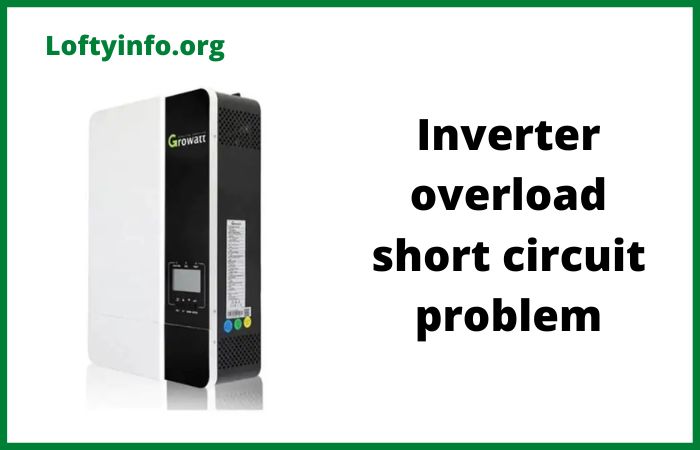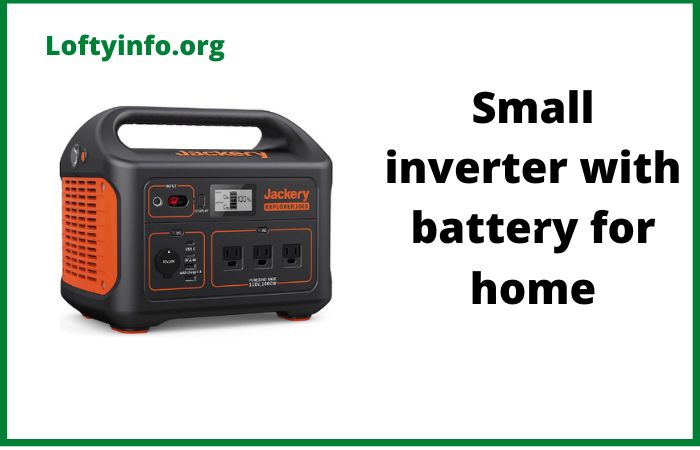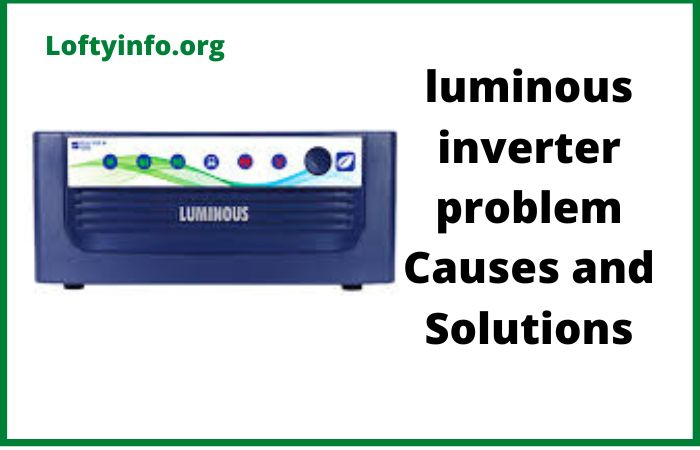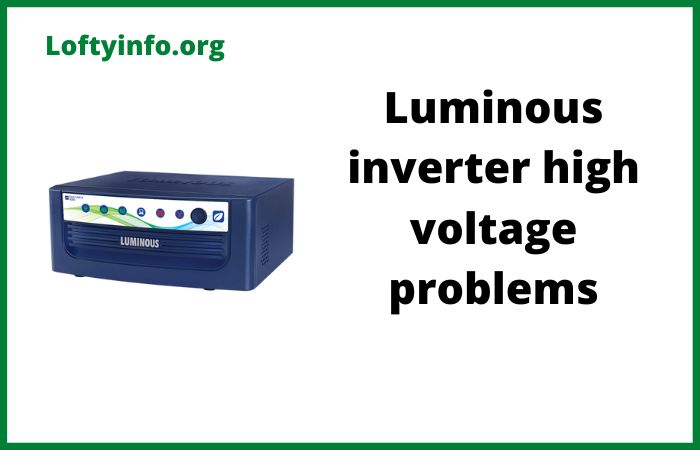Inverter Overload Short Circuit Problem
Modern power inverters have become essential devices in homes and businesses, converting DC power from batteries into usable AC power for various appliances.
While these devices are generally reliable, overload and short circuit problems remain among the most common issues that users encounter.
Understanding these problems, their causes and solutions can save you time, money and prevent potential damage to your electrical equipment.
An inverter overload occurs when the total power consumption of connected devices exceeds the inverter’s rated capacity.
Short circuits happen when there’s an unintended connection between two points in an electrical circuit, causing excessive current flow.
Both situations trigger the inverter’s protective mechanisms, shutting down the system to prevent damage.
This guide will walk you through the most common overload and short circuit problems, helping you identify causes and implement effective solutions.
Common Overload And Short Circuit Problems
1) Continuous overload alarm with automatic shutdown
One of the most frequent problems inverter users face is the continuous triggering of overload alarms followed by automatic shutdown.
The inverter produces a loud beeping sound and the display shows an overload error, even when you believe the connected load is within acceptable limits.
This issue becomes particularly frustrating when it occurs repeatedly, preventing you from using essential appliances.
The primary cause of this problem often stems from connecting devices that require high startup current, commonly known as inductive loads.
Equipment like refrigerators, air conditioners, washing machines and power tools draw several times their normal operating current when they first start.
For example, a refrigerator that runs on 200 watts might need 800-1000 watts for a few seconds during startup.
If your inverter is rated at 1000 watts and already powering other devices, this surge can trigger the overload protection.
Another cause involves running too many appliances simultaneously without calculating the total power consumption accurately.
Many users make the mistake of adding up only the wattage printed on appliance labels without considering efficiency losses or power factor corrections.
The actual power drawn can be 10-20% higher than rated values.
To solve this issue, start by calculating your total load properly. Make a list of all connected devices and their power ratings.
Use a clamp meter to measure actual current draw rather than relying solely on nameplate ratings. For inductive loads, multiply the rated wattage by 3-5 to account for startup surge.
If your total calculated load approaches or exceeds 80% of your inverter’s capacity, you need to reduce the number of connected devices or upgrade to a higher capacity inverter.
Implement a staggered startup routine for high-power appliances. Instead of turning on your refrigerator, microwave and washing machine simultaneously, space out their startup times by several minutes.
This prevents multiple surge currents from combining and overwhelming your inverter. Install soft start devices for particularly problematic inductive loads like air conditioners.
These devices gradually ramp up current flow, reducing startup surge by up to 70%.
Check your inverter’s overload threshold settings if your model allows adjustment. Some inverters have conservative factory settings that trigger at 90% capacity.
Adjusting this to 95-100% might resolve nuisance tripping, but only do this if you’re certain your calculations are accurate and your inverter has adequate cooling.
2) Intermittent short circuit detection with no visible fault
Many inverter users experience intermittent short circuit alarms that occur randomly without any visible wiring problems or damaged appliances.
The inverter suddenly displays a short circuit error, shuts down completely and refuses to restart until you disconnect all loads and reset the system.
This unpredictable behavior makes troubleshooting extremely difficult because the fault disappears before you can locate it.
Loose connections in your electrical wiring represent the most common hidden cause.
Over time, terminal connections in outlets, switches and junction boxes can loosen due to thermal expansion and contraction.
When a high-power device draws current through a loose connection, arcing occurs momentarily, creating a brief short circuit condition that your inverter detects.
The connection then cools and returns to near-normal operation until the cycle repeats.
Another significant cause involves damaged appliance power cords that have internal conductor breaks.
The outer insulation appears intact but the copper wires inside have fractured due to repeated bending or mechanical stress.
These breaks create intermittent contact that can cause momentary short circuits, especially when you move the cord or when vibration from the running appliance shifts the broken wires.
Moisture infiltration in outdoor or poorly sealed electrical enclosures creates conductive paths between conductors.
This problem intensifies during humid conditions or after rain.
The short circuit appears when moisture bridges the gap between hot and neutral conductors, then disappears as the moisture evaporates.
To troubleshoot this issue systematically, disconnect all loads from your inverter and restart it. If it operates normally with no load, begin reconnecting devices one at a time, waiting 5-10 minutes between each addition.
This process helps identify which specific appliance or circuit is causing the fault. Pay special attention to devices that were running when the fault occurred.
Inspect all electrical connections thoroughly.
Turn off the inverter completely and check every wire terminal, outlet connection and junction box.
Tighten all screws and ensure conductors are properly seated. Look for discoloration around connections, which indicates arcing has occurred.
Replace any terminals that show burn marks or corrosion.
Examine power cords carefully by flexing them along their entire length while checking for resistance changes with a multimeter.
Focus on areas near plugs and appliance entries where bending stress is highest. Replace any cords that show fluctuating resistance readings.
Consider using a megger or insulation resistance tester to check for leakage paths between conductors and ground.
Readings below 1 megohm indicate insulation breakdown that needs immediate attention.
3) Overload during motor startup causing complete system failure
Starting electric motors presents unique challenges for inverter systems.
Users often experience complete system shutdown the moment they try to start a motor-driven appliance, even when the inverter should theoretically handle the load.
The inverter immediately displays an overload error and shuts down so quickly that the motor barely begins turning.
This prevents you from using essential equipment like water pumps, table saws or compressors.
The fundamental cause lies in the extremely high inrush current that motors draw during startup.
A typical induction motor requires 6-8 times its running current for the first few seconds.
A 1-horsepower motor that draws 8 amps during normal operation might demand 50-60 amps briefly during startup.
Pure sine wave inverters generally handle this better than modified sine wave units but both have limits.
If your inverter’s surge capacity is insufficient or its overload detection is too sensitive, it interprets this legitimate startup current as a fault condition.
Undersized battery banks contribute significantly to this problem.
While your inverter might be rated for adequate surge capacity, the batteries must deliver the required current.
If your battery bank has high internal resistance due to age, sulfation or inadequate capacity, the voltage drops sharply when the motor tries to start.
This voltage sag triggers the inverter’s low voltage protection, shutting down the system before the motor can accelerate to running speed.
Mechanical binding or increased friction in the motor or driven equipment forces the motor to work harder during startup, drawing even more current than normal.
A water pump with a partially seized bearing or a table saw with a tight blade might require twice the normal startup current, pushing even a properly sized inverter beyond its limits.
To solve motor startup problems, first verify your inverter has adequate surge capacity.
Most inverter manufacturers specify continuous power rating and surge rating.
The surge rating should be at least 2-3 times the continuous rating.
For motor loads, you need an inverter with surge capacity of at least 8-10 times the motor’s running wattage.
A 1-horsepower motor that runs at 750 watts needs an inverter with minimum 6000-watt surge capacity.
Upgrade your battery bank if voltage sag is occurring.
Use a voltmeter to monitor battery voltage during motor startup attempts.
If voltage drops below 11 volts on a 12-volt system or below 22 volts on a 24-volt system, your batteries cannot supply adequate current.
Add more batteries in parallel to reduce internal resistance and increase available current.
Ensure all battery connections are clean and tight, as connection resistance adds to total system resistance.
Install a motor soft starter between your inverter and problematic motors.
These devices use electronic components or autotransformers to gradually increase voltage to the motor over 3-10 seconds.
This reduces startup current by 50-70%, making the load manageable for smaller inverters. Soft starters designed for solar and inverter applications are available for most motor sizes.
Inspect and maintain motor-driven equipment regularly.
Lubricate bearings, check for mechanical binding and ensure driven equipment moves freely.
A motor that starts easily without mechanical resistance draws significantly less current.
For pumps specifically, check that the impeller spins freely and no debris is blocking the intake.
4) False overload alarms caused by inverter malfunction
Sometimes the problem lies not with your loads or wiring but with the inverter itself.
Users encounter situations where the inverter displays overload errors with minimal connected load or even with no load at all.
The unit might work normally for hours or days, then suddenly begin showing false overload alarms that make it unusable.
This situation is particularly frustrating because all troubleshooting of external factors yields no results.
Internal component failure represents the primary cause of false overload detection.
Inverters use current transformers or hall effect sensors to monitor load current continuously.
These sensors can drift out of calibration over time or fail completely, reporting incorrect current readings to the inverter’s control circuit.
When a faulty sensor reports 15 amps when actual current is only 5 amps, the inverter incorrectly triggers overload protection.
Defective control board components can also cause false triggering.
Capacitors in the control circuit may fail, causing voltage fluctuations that the microcontroller interprets as overload conditions.
Failed solder joints on circuit boards create intermittent connections that produce erratic behavior.
These problems typically worsen with temperature changes, which explains why false alarms often occur after the inverter has been running for a while and heated up.
Firmware bugs in the inverter’s control software can cause incorrect overload detection under specific conditions.
Some inverter models have known issues where certain load types or power levels trigger software glitches that falsely indicate overload.
Manufacturers occasionally release firmware updates to address these issues but many users remain unaware of available updates.
To diagnose inverter-related faults, perform a complete no-load test.
Disconnect every single load from the inverter and let it run for several hours.
Monitor it periodically to see if overload alarms occur with absolutely nothing connected.
If alarms trigger with zero load, the inverter itself is definitely faulty.
Test the inverter’s load detection accuracy using known loads.
Connect a simple resistive load like an incandescent light bulb or electric heater with known wattage.
Use a clamp meter to measure actual current draw and compare it to what the inverter displays. A significant discrepancy indicates sensor calibration problems.
Some inverters allow recalibration through service menus, but this typically requires technical knowledge and manufacturer documentation.
Check for available firmware updates from the manufacturer. Visit the company’s website and search for your specific model number.
Download any available firmware updates and follow the manufacturer’s installation instructions carefully.
Firmware updates often resolve known bugs that cause false triggering.
Open the inverter case and perform a visual inspection if you’re comfortable with electronics and the warranty has expired.
Look for bulging or leaking capacitors on the control board, which are common failure points. Examine circuit board solder joints under magnification, looking for cracks or cold solder joints that create intermittent connections.
Check for any signs of insect intrusion, as ants and other insects can create conductive paths that cause erratic behavior.
If the inverter is still under warranty, contact the manufacturer’s technical support with detailed documentation of the problem.
Explain all troubleshooting steps you’ve performed and provide evidence that external factors are not causing the issue.
Most manufacturers will authorize repair or replacement when clear evidence of internal faults exists.
5) Short circuits in the inverter output wiring and distribution panel
Short circuits in the AC wiring between your inverter output and your loads create dangerous conditions and repeated shutdowns.
Unlike overload situations where the inverter strains but continues running briefly, short circuits cause immediate shutdown with fault indications.
Users often discover this problem after adding new circuits, moving equipment or performing electrical work.
Incorrect wiring during installation or modifications causes many short circuits.
The most common error involves accidentally connecting the hot conductor to the neutral or ground conductor during outlet installation or circuit additions.
Even a single strand of wire touching across conductors creates a dead short that instantly trips the inverter’s protection.
Stripped wire insulation during installation sometimes leaves exposed conductors that touch each other inside electrical boxes.
Damaged insulation on wiring running through walls, attics or conduits creates short circuit paths.
Rodents chewing through wire insulation, nails or screws driven through wiring during construction or physical damage from moving equipment can all breach conductor insulation.
These shorts may be intermittent if the conductors don’t maintain constant contact.
Faulty electrical devices and outlets can create internal shorts.
A failed outlet where the internal hot and neutral conductors have shorted together will immediately short circuit your inverter when you plug in any device.
Similarly, appliances with internal short circuits between their power conductors will cause inverter shutdown the moment you turn them on.
Water damage in electrical boxes or conduits creates conductive paths between conductors. Leaking roofs, condensation in outdoor enclosures or flooding can all introduce moisture that bridges the gap between hot and neutral conductors.
Salt water is particularly problematic as it conducts electricity readily even in thin films.
To locate short circuits systematically, turn off all circuit breakers or remove all fuses in your distribution panel. Restart the inverter with no circuits connected.
If it runs normally, you’ve confirmed the short is in your branch circuit wiring rather than in the inverter itself. Begin turning on circuits one at a time, waiting for the inverter to stabilize before adding the next circuit.
The circuit that causes immediate shutdown contains your short.
Once you’ve identified the problem circuit, disconnect all devices from that circuit and try again.
If the inverter still trips with nothing plugged in, the short is in the permanent wiring. If it works with everything unplugged, reconnect devices one by one to identify the faulty appliance.
Use a multimeter to check resistance between hot and neutral conductors with power completely off. A reading near zero ohms indicates a direct short.
A reading of a few ohms suggests a high-resistance short that might be intermittent.
Properly wired circuits with no loads should show infinite resistance or readings in the megohm range between hot and neutral.
Inspect all electrical boxes systematically along the problem circuit. Remove cover plates and outlet boxes to examine wire connections.
Look for exposed bare wire, burned insulation or conductors touching where they shouldn’t. Pay particular attention to boxes where wire insulation was stripped, as these are common short circuit locations.
For shorts in concealed wiring that you cannot visually locate, consider using a non-contact voltage tester or circuit tracer to track the circuit path.
Look for locations where the circuit runs near areas that might have physical damage. Check attics and crawl spaces for rodent activity.
In cases where extensive hidden damage exists, running a new circuit may be more practical than trying to repair concealed wiring.
Understanding these common inverter overload and short circuit problems empowers you to maintain reliable power systems.
Regular maintenance, proper load calculations and systematic troubleshooting will resolve most issues you encounter.
When problems exceed your technical capabilities, consulting a qualified electrician ensures safe and effective solutions.
Remember that electrical safety should always be your primary concern when working with inverters and household wiring.
how battery LVD affects performance
How to troubleshoot inverter battery that keeps charging even when full
What differentiates a solar generator from a traditional solar setup






